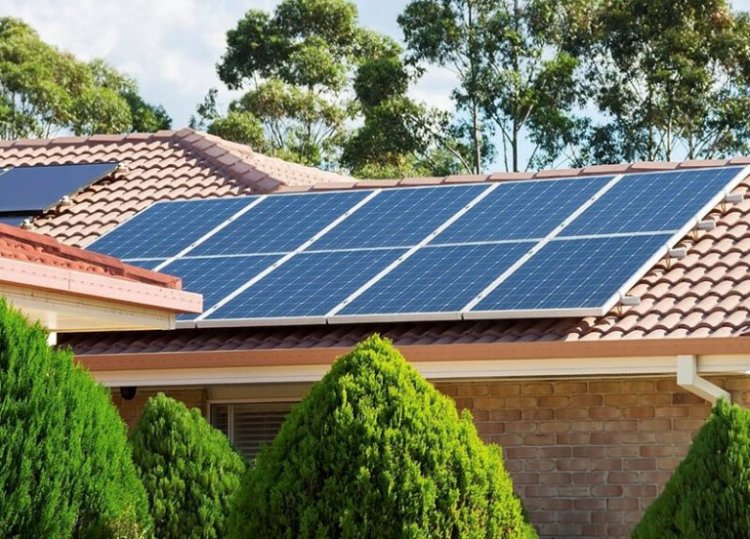Solar Panels: A Comprehensive Guide to Harnessing Solar Power
Solar panels have become synonymous with clean, renewable energy. They’re transforming how we think about powering our homes, businesses, and even entire cities.

Solar panels have become synonymous with clean, renewable energy. They’re transforming how we think about powering our homes, businesses, and even entire cities. But how exactly do these panels work, and why should you care? Let’s dive into the fascinating world of solar energy.
How Solar Panels Work
The Basics of Solar Energy Conversion
Solar panels convert sunlight into electricity through the photovoltaic (PV) effect. This process involves sunlight striking the panel’s surface, which generates an electric current.
Key Components of a Solar Panel
Solar panels are composed of photovoltaic cells, a protective glass layer, and a frame. These components work together to capture and convert sunlight efficiently.
Understanding Photovoltaic Cells
Photovoltaic cells are made of semiconductor materials like silicon. When sunlight hits these cells, electrons are knocked loose, creating an electric current.
Types of Solar Panels
Monocrystalline Solar Panels
Known for their high efficiency and sleek appearance, monocrystalline panels are made from single-crystal silicon.
Polycrystalline Solar Panels
These panels are more affordable but slightly less efficient than their monocrystalline counterparts. solar panel installation process begins with a thorough site assessment to evaluate the roof's orientation, shading, and structural integrity.
Thin-Film Solar Panels
Thin-film panels are lightweight and flexible, making them ideal for unconventional installations.
Comparison of Different Types
Each type has its pros and cons, with efficiency, cost, and aesthetics playing key roles in decision-making.
Benefits of Using Solar Panels
Environmental Impact
Solar panels reduce greenhouse gas emissions, helping combat climate change.
Cost Savings Over Time
While the upfront costs can be high, solar panels significantly reduce electricity bills in the long run.
Energy Independence
Solar power allows individuals and businesses to rely less on traditional energy grids.
Key Factors to Consider Before Installation
Roof Suitability and Space
Ensure your roof is structurally sound and has enough space for panels.
Climate and Sunlight Exposure
Areas with more sunlight provide better energy generation, but even cloudy regions can benefit.
Cost and Return on Investment
Evaluate the upfront costs versus potential savings and incentives.
Installation Process
Steps to Install Solar Panels
From site assessment to connecting to the grid, installation involves several steps requiring expertise.
Hiring Professionals vs. DIY Installation
While DIY can save money, hiring professionals ensures safety and efficiency.
Maintenance and Longevity
How to Maintain Solar Panels
Cleaning debris and inspecting for damage are key to maintaining efficiency.
Average Lifespan of Solar Panels
Most panels last 25–30 years with proper care.
Common Myths About Solar Panels
Solar Panels Don’t Work in Cloudy Weather
Modern solar panels can generate energy even in low-light conditions.
Solar Energy Is Too Expensive
Costs have significantly dropped, making solar energy accessible to more people.
Solar Panels Are High Maintenance
Solar panels require minimal maintenance, especially when installed correctly.
Solar Panels for Residential Use
Powering Homes with Solar Energy
Solar panels can meet most household energy needs, reducing reliance on traditional grids.
Off-Grid vs. On-Grid Systems
Off-grid systems provide complete independence, while on-grid systems allow for net metering.
Solar Panels for Businesses
Benefits for Commercial Properties
Businesses can save significantly on energy costs while enhancing their sustainability efforts.
Cost-Saving Potential for Businesses
Solar power can cut operating costs, increasing profitability over time.
Solar Incentives and Rebates
Government Incentives for Solar Adoption
Many governments offer rebates and subsidies to encourage solar energy use.
Tax Benefits for Solar Panel Users
Homeowners and businesses can enjoy tax credits for installing solar panels.
Solar Panels Around the World
Adoption Rates in Different Countries
Countries like Germany, China, and the USA lead in solar panel adoption.
How Solar Panels Are Changing Energy Consumption Globally
Solar energy is becoming a significant contributor to global energy production.
Challenges in Solar Panel Adoption
High Initial Costs
Upfront costs remain a barrier for many, despite long-term savings.
Storage and Battery Limitations
Energy storage solutions like batteries are still developing.
The Future of Solar Panels
Emerging Technologies in Solar Power
Advancements like bifacial panels and perovskite cells promise greater efficiency.
Predictions for Solar Energy Adoption
With decreasing costs and technological advancements, solar power is set to dominate the energy landscape.
Conclusion
Solar panels represent a bright future for energy. By embracing this technology, you contribute to a cleaner environment, save money, and gain energy independence. The time to go solar is now—don’t wait to harness the power of the sun! best solar panels on the market typically have efficiency ratings exceeding 20%, allowing them to convert more sunlight into usable electricity.
FAQs
-
Are solar panels worth the investment?
Yes, they offer long-term savings and environmental benefits. -
How much does a typical solar panel system cost?
Costs range from $10,000 to $25,000, depending on the system size and location. -
Can solar panels power an entire house?
Yes, with the right system and sufficient sunlight, they can meet all energy needs. -
Do solar panels require a lot of maintenance?
No, they are low-maintenance, requiring occasional cleaning and inspections. -
What happens to solar panels after their lifespan ends?
Many components can be recycled, reducing environmental impact.
What's Your Reaction?
















